by TeachThought Employees
On the finish of the day, instructing is about studying and studying is about understanding.
And as expertise evolves to empower extra numerous and versatile assessments types, continuously enhancing our sense of what understanding appears like–throughout cell studying, throughout project-based studying, and in a flipped classroom–cannot solely enhance studying outcomes however simply may be the key to offering customized studying for each learner.
This content material begs the query: why does one want options to the established and entrenched Bloom’s? As a result of Bloom’s isn’t meant to be the alpha and the omega of framing instruction, studying, and evaluation. Benjamin Bloom’s taxonomy does a superb job of providing ‘verbs’ in classes that impose a useful cognitive framework for planning studying experiences, nevertheless it neglects vital concepts, corresponding to self-knowledge that UbD locations on the pinnacle of understanding, or the thought of shifting from incompetence to competence that the SOLO taxonomy affords.
So with apologies to Bloom (whose work we love), we’ve gathered six options to his legendary, world-beating taxonomy, from the TeachThought Studying Taxonomy, to work from Marzano to Fink, to Understanding by Design.
6 Alternate options To Bloom’s Taxonomy For Academics
1. The TeachThought Studying Taxonomy
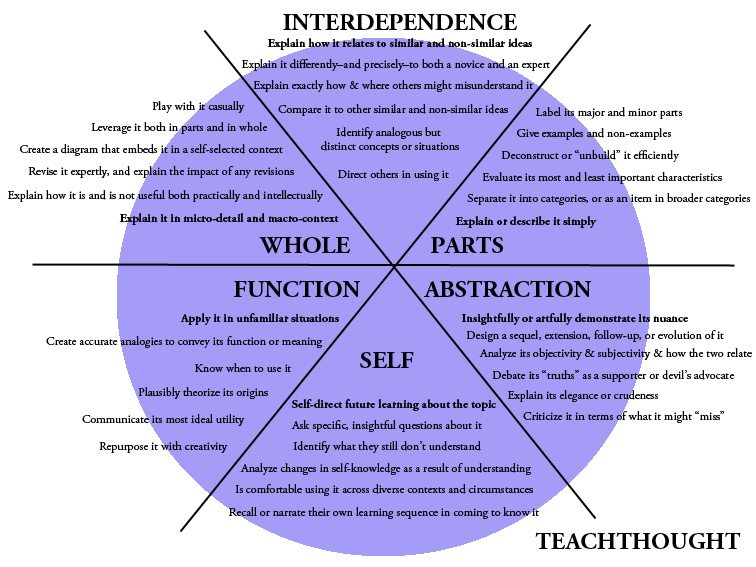
The TeachThought Studying Taxonomy orders remoted duties that vary from much less to extra complexity into six domains:
- The Elements (i.e., clarify or describe an idea in easy phrases)
- The Complete (i.e., clarify an idea in micro-detail and macro-context)
- The Interdependence (i.e., clarify how an idea pertains to related and non-similar ideas)
- The Perform (i.e., apply an idea in unfamiliar conditions)
- The Abstraction (i.e., show an idea’s nuance with artfulness or perception)
- The Self (i.e., self-direct future studying in regards to the idea)
2. UbD’s Six Sides Of Understanding
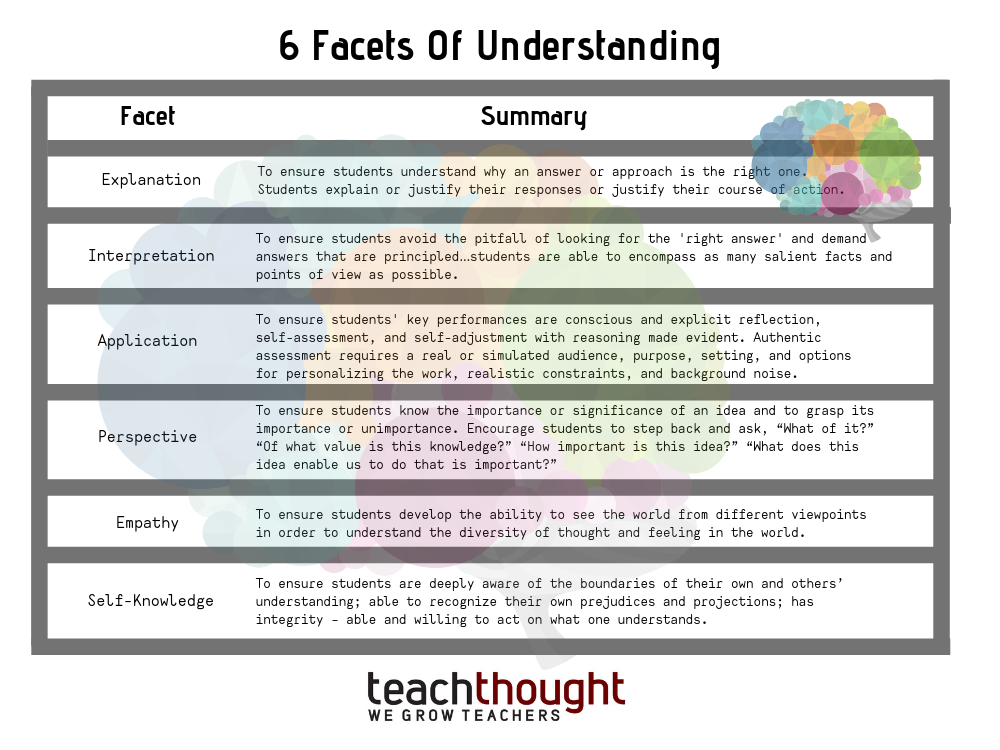

Created by Grant Wiggins and Jay McTighe to work with and thru their Understanding by Design mannequin, the 6 Sides of Understanding is a non-hierarchical framework designed to assist academics consider and assess scholar understanding.
3. Marzano & Kendall/Taxonomy
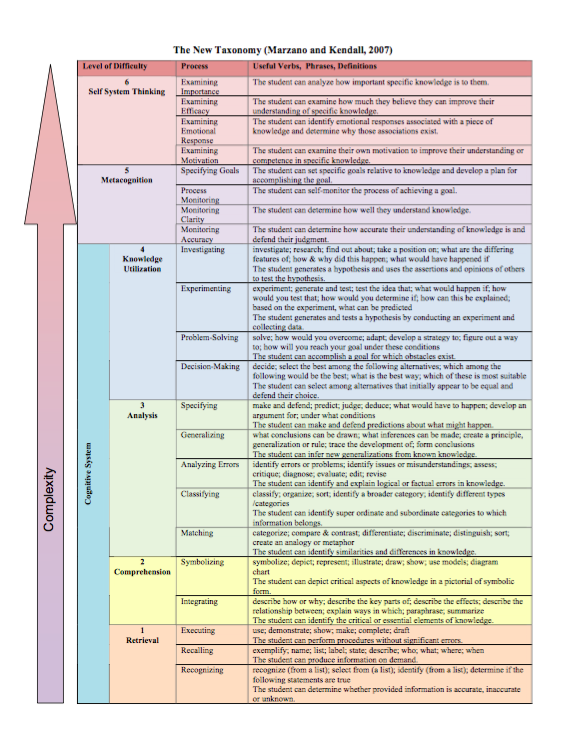

Marzano’s and Kendall’s taxonomy arranges a rating of processes into six classes, from lowest to highest stage of issue. Accompanying every class are verbs and phrases that will show helpful for academics in designing assessments and evaluating mastery:
- Retrieval (i.e., executing, recalling, recognizing)
- Comprehension (i.e., integrating and symbolizing)
- Evaluation (i.e., matching, classifying, analyzing, generalizing, specifying)
- Information Utilization (i.e., decision-making, problem-solving, experimenting, investigating)
- Metacognition (i.e., monitoring accuracy, monitoring readability, course of monitoring, specifying targets, analyzing motivation)
- Self System Pondering (i.e. analyzing feelings, analyzing effectivity, analyzing significance)
4. The Taxonomy Of Important Studying
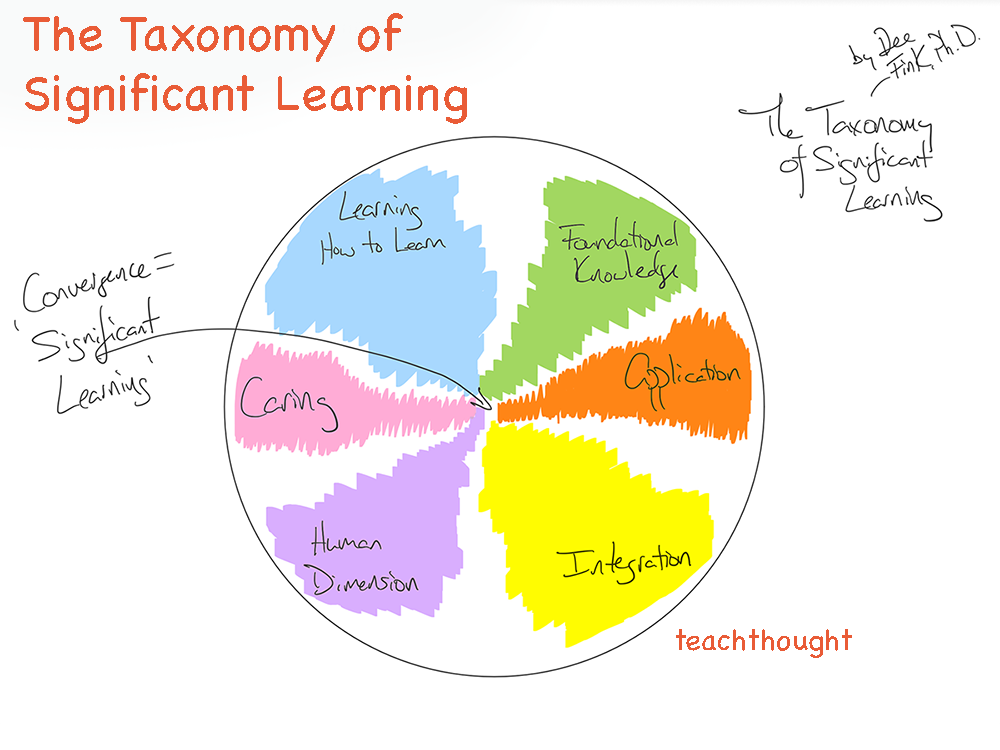

Dr. Dee Fink’s Taxonomy of Important Studying describes attributes of ‘important’ studying versus ‘much less important’ studying (the previous having better endurance, resonance, and potential to enhance scholar studying, and the latter being extra classroom-centered and fewer related or relevant exterior of the classroom). The middle of the taxonomy is the ‘candy spot’ of studying design.
5. Webb’s Depth Of Information Framework
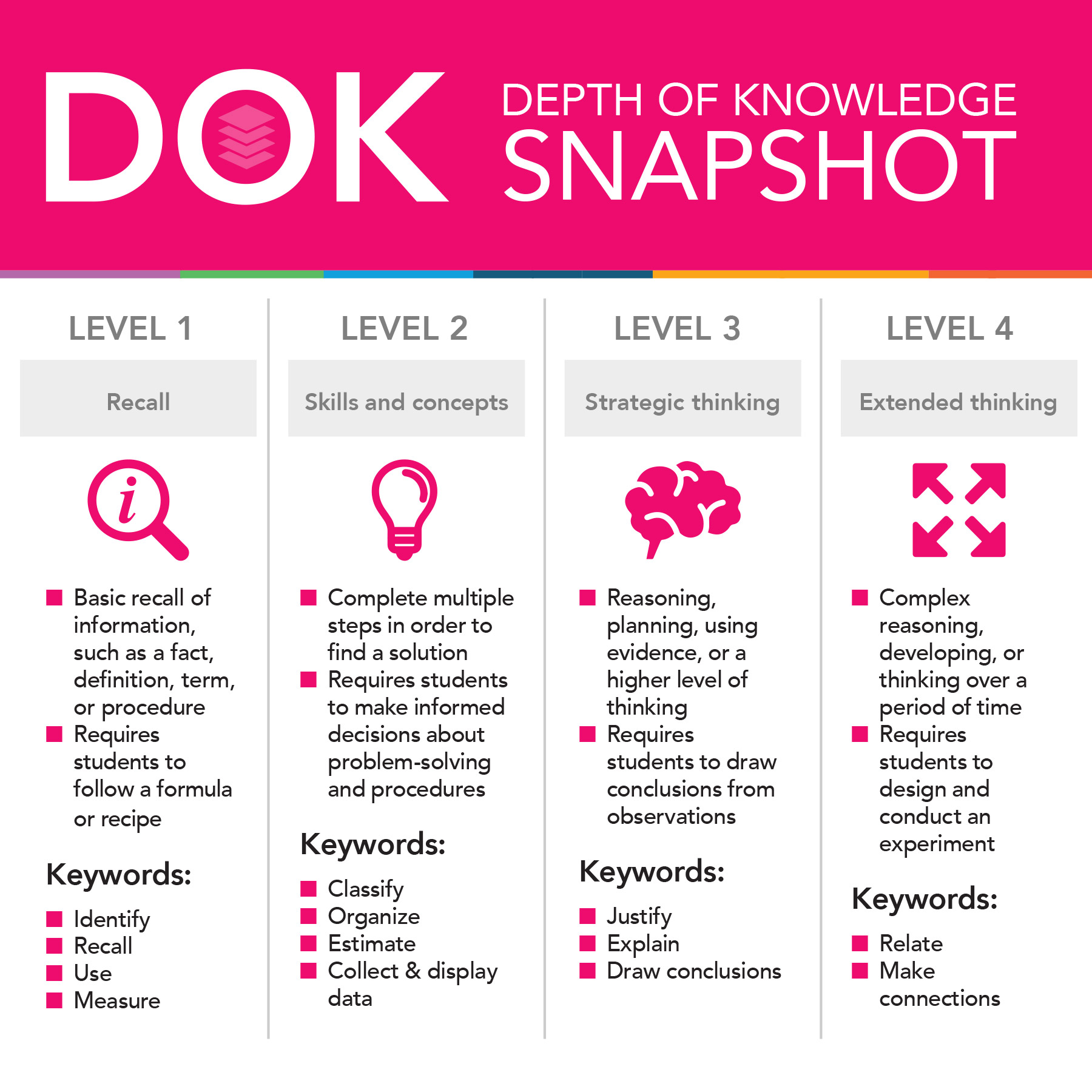

Webb’s Depth of Information framework is designed to advertise rigor, and organizes particular methods and better order pondering abilities into 4 domains, shifting from decrease to greater complexity:
- Recall
- Talent/Idea
- Strategic Pondering
- Prolonged Pondering
6. The SOLO Taxonomy
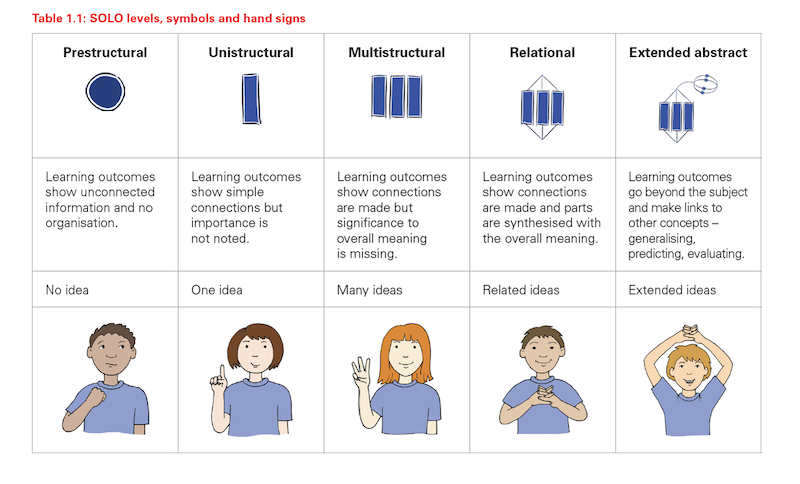

SOLO stands for the “construction of noticed studying outcomes.” Created by John Biggs and Kevin Collis, the SOLO taxonomy is made up of 5 ranges of understanding, as illustrated above. In accordance with Biggs, “At first, we decide up just one or few elements of the duty (unistructural), then a number of elements which can be unrelated (multi-structural), then we discover ways to combine them into a complete (relational), and at last, we’re capable of generalize that entire to as but untaught functions (prolonged summary).”

